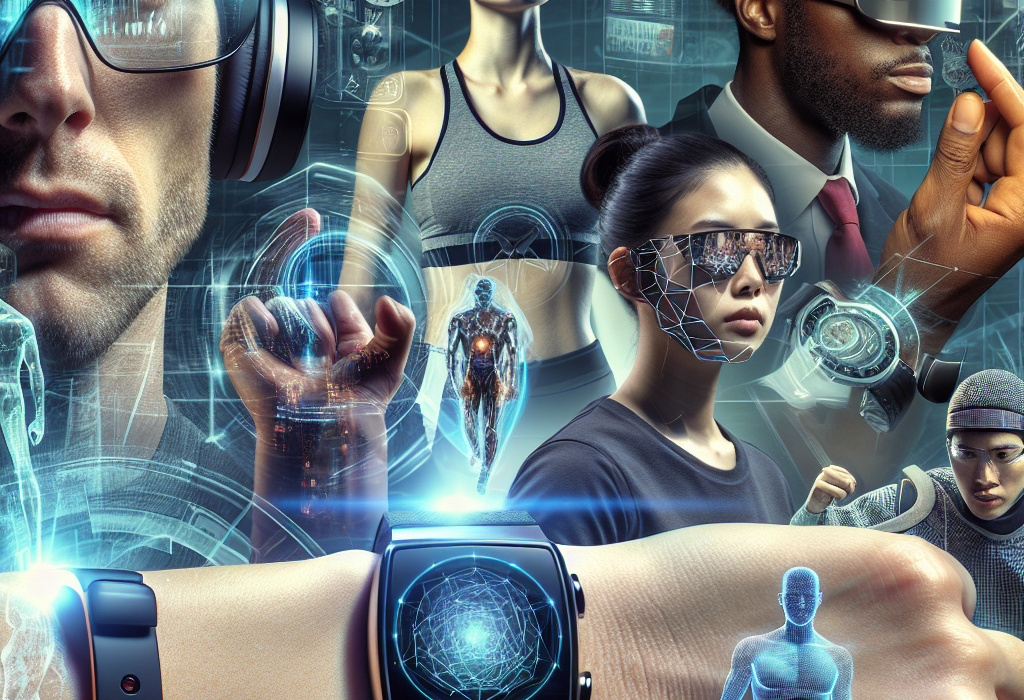Wearable Technology: Beyond Fitness Trackers
In recent years, wearable technology has significantly expanded beyond its initial focus on fitness trackers. While devices like Fitbit and Apple Watch have cemented wearables’ importance in monitoring physical activity and health metrics, the frontier of wearable technology promises to revolutionize various facets of our lives, from healthcare to fashion, workplace productivity, entertainment, and even environmental sustainability.
Health and Medical Applications
The healthcare sector stands to gain tremendously from advances in wearable technology. Medical-grade wearables now monitor a range of vital signs continuously, offering significant advantages over occasional check-ups. For instance, devices equipped with electrocardiogram (ECG) capabilities can detect irregular heart rhythms in real-time, providing early warnings of conditions like atrial fibrillation. Continuous glucose monitors (CGMs) are another breakthrough, offering diabetic patients a less invasive way to keep track of their blood sugar levels.
Moreover, smart clothing embedded with biosensors can measure respiration rate, muscle activity, and other physiological signals. This type of monitoring is invaluable for patients with chronic diseases, allowing healthcare providers to make informed decisions and offer personalized treatment plans. The data collected can be transmitted to cloud-based platforms where machine learning algorithms analyze it, providing further insights and predictive analytics.
Workplace Productivity and Safety
The integration of wearable tech in the workplace extends its reach to productivity and safety. Smart glasses, for example, are enhancing the way workers interact with their environment. Augmented Reality (AR) integrated into these glasses can overlay essential data for field workers, providing real-time navigation, instructions, and diagnostics. This is incredibly beneficial in sectors like manufacturing, construction, and logistics, where hands-free access to critical information can vastly improve efficiency and safety.
Another innovative use is in monitoring employee well-being. Wearable devices can track stress levels, fatigue, and other health metrics, allowing employers to undertake timely interventions to prevent burnout and accidents. By analyzing aggregated data, companies can also optimize workforce management, ensuring that employees are assigned tasks that suit their current physical and mental state.
Fashion and Everyday Convenience
Wearable technology is also making waves in the fashion industry. Beyond being functional, wearables are becoming stylish accessories. Designers are collaborating with tech companies to create smart fabrics that change color, pattern, or even temperature based on user input or environmental conditions.
Moreover, everyday convenience is being augmented with wearables. Smart rings, for instance, can make contactless payments, unlock doors, and even notify users of incoming calls and messages. These devices are designed to work seamlessly with existing technology ecosystems, offering a blend of utility and convenience.
Entertainment and Virtual Reality (VR)
The realm of entertainment is another beneficiary of wearable advancements. Virtual Reality (VR) headsets have become increasingly sophisticated, offering immersive experiences that were once the stuff of science fiction. Combined with haptic feedback suits and gloves, users can now experience a highly interactive and lifelike engagement in virtual environments, making significant strides in gaming, training simulations, and even social interactions.
Environmental Sustainability
Interestingly, wearable technology also holds potential for contributing to environmental sustainability. Devices that track personal carbon footprints, energy consumption, and even air quality are emerging. By making individuals more aware of their environmental impact, these wearables can encourage more sustainable behaviors. Additionally, data aggregated from these devices can help in broader environmental monitoring and policymaking.
Challenges and Ethical Considerations
Despite these promising developments, wearable technology also faces significant hurdles, particularly concerning data privacy and security. The extensive collection and sharing of personal data require stringent safeguards to protect against unauthorized access and misuse. Ethical concerns also arise regarding the extent to which individuals are monitored and the potential implications for personal freedom and autonomy.
Conclusion
Wearable technology is rapidly evolving and seeping into various aspects of our daily lives, far beyond the realm of fitness. From healthcare and workplace productivity to fashion, entertainment, and environmental sustainability, wearables are paving the way for a smarter, more interconnected world. As this technology continues to advance, addressing the ethical and privacy concerns will be crucial in ensuring its benefits are fully realized and equitably distributed. The future of wearable technology promises not just to monitor our steps but to revolutionize the way we live in a connected ecosystem.

